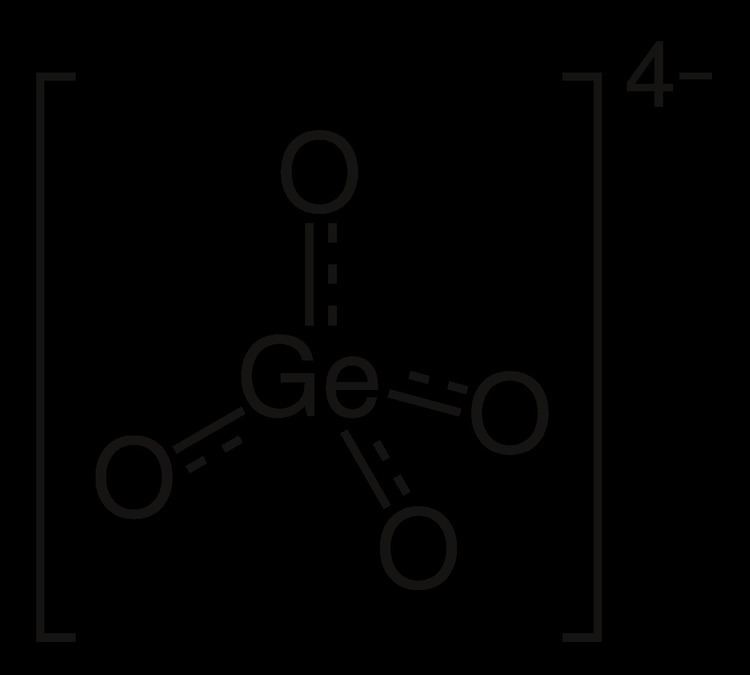 | ||
In chemistry germanate is a compound containing an oxyanion of germanium. In the naming of inorganic compounds it is a suffix that indicates a polyatomic anion with a central germanium atom, for example potassium hexafluorogermanate, K2GeF6.
Contents
Germanate oxy compounds
Germanium is similar to silicon forming many compounds with tetrahedral {GeO4} units although it can also exhibit 5 and 6 coordination. Analogues of all the major types of silicates and aluminosilicates have been prepared. For example the compounds Mg2GeO4 (olivine and spinel forms), CaGeO3(perovskite structure), Be2GeO4 (phenakite structure) show the resemblance to the silicates. BaGe4O9 has a complex structure containing 4 and 6 coordinate germanium Germanates are important for geoscience as they possess similar structures to silicates and can be used as analogues for studying the behaviour of silicate minerals found in the earths mantle, for example MnGeO3 has a pyroxene type structure similar to that of MgSiO3 which is a significant mineral in the mantle.
Germanates in aqueous solutions
The alkali metal orthogermanates, M4GeO4,containing discrete GeO4−
4 ions, form acidic solutions containing GeO(OH)−
3, GeO
2(OH)2−
2 and [(Ge(OH)4)8(OH)3]3−. Neutral solutions of germanium dioxide contain Ge(OH)4, but at high pH germanate ions such as GeO(OH)−
3, GeO
2(OH)2−
2 are present.
Germanate zeolites
Microporous germanate zeolites were first prepared in the 1990s. A common method of preparation is hydrothermal synthesis using an organic amine as a template (structure determining agent). The frameworks are negatively charged due to extra oxide ions which leads to higher coordination numbers for germanium of 5 and 6. The negative charge is balanced by the positively charged amine molecules.
In addition to the ability of germanium to exhibit 4, 5 or 6 coordination, the greater length of the Ge–O bond in the {GeO4} tetrahedral unit compared to Si–O in {SiO4} and the narrower Ge–O–Ge angle (130°–140°) between corner shared tetrahedra allow for unusual framework structures. A zeolite reported in 2005 has large pores – 18.6 × 26.2 Å interconnected by channels defined by 30-membered rings (the naturally occurring zeolite faujasite with channels defined by 12-membered rings ). Zeolites with frameworks containing silicon and germanium (silicogermanates), aluminium and germanium (aluminogermanates) and zirconium and germanium (zirconogermanates) are all known.
